When the NHL made it mandatory for clubs to have two goaltenders dressed for all games in the upcoming 1965-66 season, the ruling created a bit of a problem for the Detroit Red Wings. Manager-coach Sid Abel must now find an adequate man to play second-fiddle to the incumbent number one netminder, Roger Crozier.
Last season, the 22-year-old Crozier played all but 32 minutes of the entire 70-game schedule for the Wings. The youngster had a spectacular first full NHL season, and was named the Calder Memorial Trophy winner as the league’s best first-year player. Crozier led Detroit to a first-place finish before they were upset by the Chicago Blackhawks in semi-finals. That playoff loss could not be at all blamed on the play of the young Detroit goalkeeper.
Crozier’s missing 32 minutes were handled, and not very well, by American Carl Wetzel. Wetzel gave up four goals in his half-game stint and that was enough to convince Abel that the Wings had no viable replacement for Crozier. For his part, the Bracebridge, Ontario native did not give any sign that he would need to be spelled off anyway.
Wetzel definitely won’t be back with Detroit, as he was claimed in the reverse draft from the Wings by the Quebec Aces of the AHL.
So this season, the Wings will be searching for a competent back-up for their number one goalie, someone who can provide NHL-quality work, but only on rare occasions. Here are the men who will be in training camp looking for an NHL pay cheque with Detroit in 1965-66.
Roger Crozier
Roger Crozier, now at the ripe, old age of 23, has one full NHL season under his belt, and what a season it was. Young Roger led the NHL in wins with 40, and missed winning the Vezina Trophy in the final game of the season, when Johnny Bower and Terry Sawchuk combined to win the award.
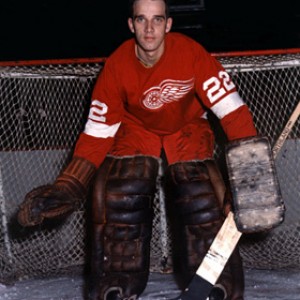
Crozier and the Wings lost in seven games to the Chicago Blackhawks in the Stanley Cup semi-final series, a disappointing end to what was a very successful season. Some observers felt that the slightly built five-foot, nine-inch, 165-pounder was simply worn out after all the wear and tear of a 70-game NHL schedule. Neither Abel nor Crozier himself lent any credence to that theory.
Crozier began his hockey career in his home town of Bracebridge, Ontario, and caught the eye of Chicago scouts when he was playing intermediate hockey at age 16. He moved to the St. Catharines Teepees for three seasons, beginning in 1959-60. He led the Teepees to the Memorial Cup in that first season.
He turned professional with the St. Louis Braves of the CPHL in the 1962-63 season. Although his statistics were not particularly impressive, his acrobatic, often spectacular play, reminiscent of Chicago’s star goaltender Glenn Hall, drew attention of other NHL clubs.
At the NHL summer meetings of June, 1963, Crozier was dealt to the Detroit Red Wings along with defenceman Ron Ingram when the Red Wings finally decided to divest themselves of problem-child defenceman Howie Young. It’s turning out to be one of Sid Abel’s shrewdest trades.
There is no reason to expect anything less than top-flight NHL goaltending once again this season from Crozier. With each team now dressing two netminders, he should get a little more rest over the long schedule, which can’t help but pay dividends once the playoffs roll around in April.
Hank Bassen
Thirty-two-year-old journeyman goalkeeper Hank Bassen looks like the best bet to claim the number two spot between the pipes for the Red Wings this season. He has been in the Detroit organization since 1960, although he had a brief one-year stint in 1957-58 with the Wings’ WHL Seattle farm club.
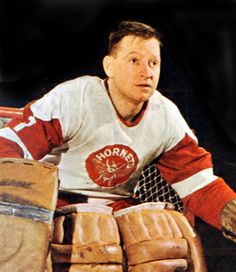
Bassen did play 62 games for Detroit, spread over the 1961-62 and 62-63 seasons, and was never considered the answer in goal. HIs work during those years came mainly as a fill-in for Terry Sawchuk.
Bassen comes from Calgary and played his junior hockey with the Buffaloes of the Western Canada Junior Hockey League. He played Senior A hockey with the Chatham (Ontario) Maroons in 1953-54 before moving up to the American Hockey League with the Buffalo Bison in 1954-55 as a Chicago farm hand. His good work at Buffalo earned him a 21-game trial with the Blackhawks in his first pro season when Al Rollins of the Hawks was injured.
Bassen was traded to Detroit in a big July, 1957 deal that sent Glenn Hall and Ted Lindsay to Chicago. One year later, he was sent by the Red Wings to Springfield of the AHL, along with Dennis Olson in a trade for Gerry Ehman and Bill McCreary.
Bassen spent one year with Springfield before being sent on the move again, this time to Vancouver of the WHL. On June 7, 1960, Detroit re-acquired Bassen, claiming him from Vancouver in the inter-league draft.
In 1964-65 Bassen appeared in 57 games with the Pittsburgh Hornets of the AHL, Detroit’s number one farm team. He recorded a 3.18 goals-against average on a mediocre Pittsburgh squad, and that performance was good enough to earn him at least a shot at the back-up spot with the Wings this season.
George Gardner
George Gardner, still just 22, was supposed to combine with Crozier to give the Red Wings a youthful goaltending duo last season and for years to come. The Red Wings had claimed Gardner from the Boston Bruins during the 1964 intra-league draft and hoped that they would catch lightning in a bottle with two extremely young goalies. While the strategy worked with Crozier, Gardner needed more seasoning in the minors. He’ll be back this fall for another try at an NHL job.
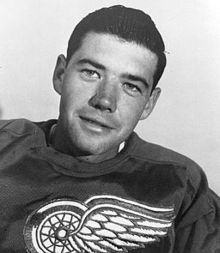
Gardner hails from Lachine, Quebec. He played his junior hockey with Boston’s sponsored teams in Victoriaville and Niagara Falls. He was a OHA Junior A second-team all-star with Niagara Falls in 1962-63. The Flyers went to the Memorial Cup Final in 1963 against the Edmonton Oil Kings, a Detroit development team. He played well in a losing cause against Edmonton, and the Red Wing scouts took note.
Gardner turned pro with the Minneapolis Bruins of the CPHL in 1963-64. He showed enough potential with the Bruins to prompt Abel to put in a draft claim at the 1964 meetings. It was obvious at training camp that the 5-foot, eight-inch, 172-pounder wasn’t quite ready for NHL competition, so he spent the 1964-65 season with the Wings’ Memphis CPHL team. He’ll get a full shot at backing up Crozier in training camp.
Bob Champoux
Yet another 22-year-old goalie in the Detroit organization, Bob Champoux will vie for a job at the Detroit training camp this fall. He’s a long-shot for a spot on the varsity roster, mainly because he played only 19 games last season.
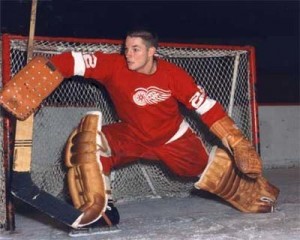
No matter what happens with Champoux’s career from here on in, he can lay claim to having appeared in one NHL game already. That happened in game two of the 1964 semi-finals. Champoux was serving as a standby goalie for the Red Wings when starter Terry Sawchuk was injured only five minutes into game against the Chicago Blackhawks. Champoux was summoned from the stands, suited up and took over for the final 55 minutes of the game.
Although he gave up four goals, the Red Wings scored five times against the great Glenn Hall, to even the series at one game apiece. Sawchuk recovered enough to play the rest of the playoffs, leaving Champoux to reprise his role of spectator.
Joe Daley
Way down near the bottom of the Detroit depth chart for goaltending is Winnipeg native Joe Daley, 22. Daley is a graduate of the Detroit-sponsored Weyburn Red Wings of the Saskatchewan Junior Hockey League. He stands five-feet, 10-inches tall, and weighs in at 160 pounds.
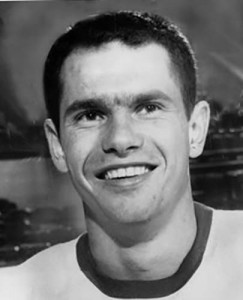
For the past two seasons, Daley has been the number one netminder for the Johnstown Jets of the EHL, and was named the loop’s rookie-of-the-year for the 1963-64 season. He has shown flashes of brilliance during his time with Johnstown, but the EHL is a very long way from the NHL. The best bet for Daley is that he moves up to Memphis, but even that may be a stretch at this point in his career.
The Red Wings are solid in goal, with Crozier starting most games. The worry for Sid Abel is, if anything should happen to his number one man, is there anybody in the organization that can keep the ship afloat?